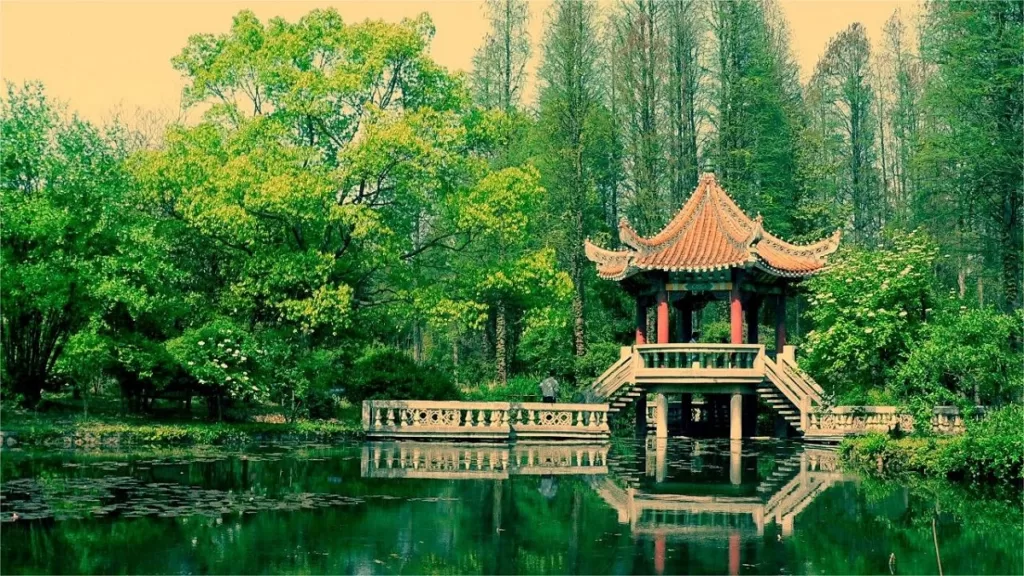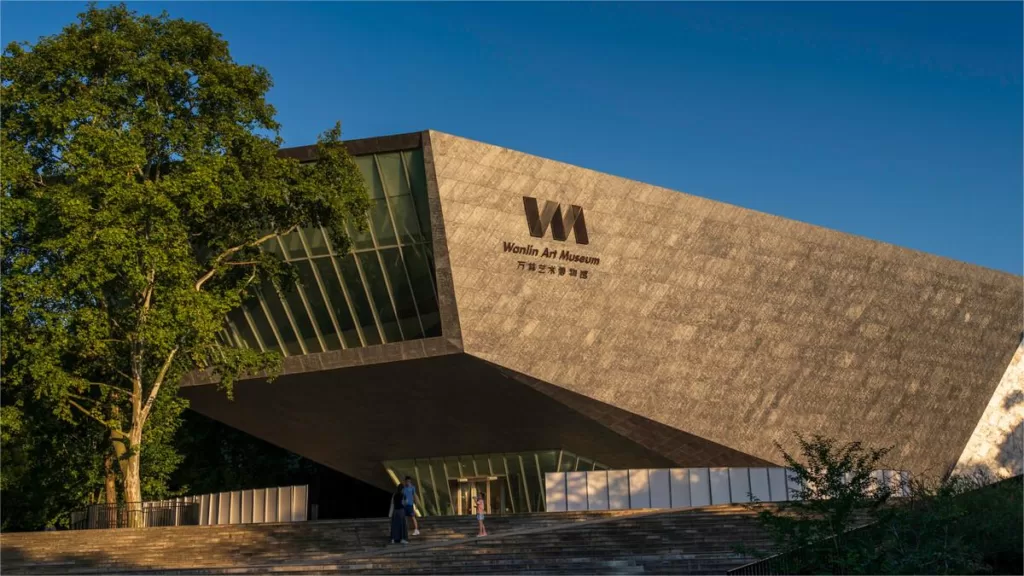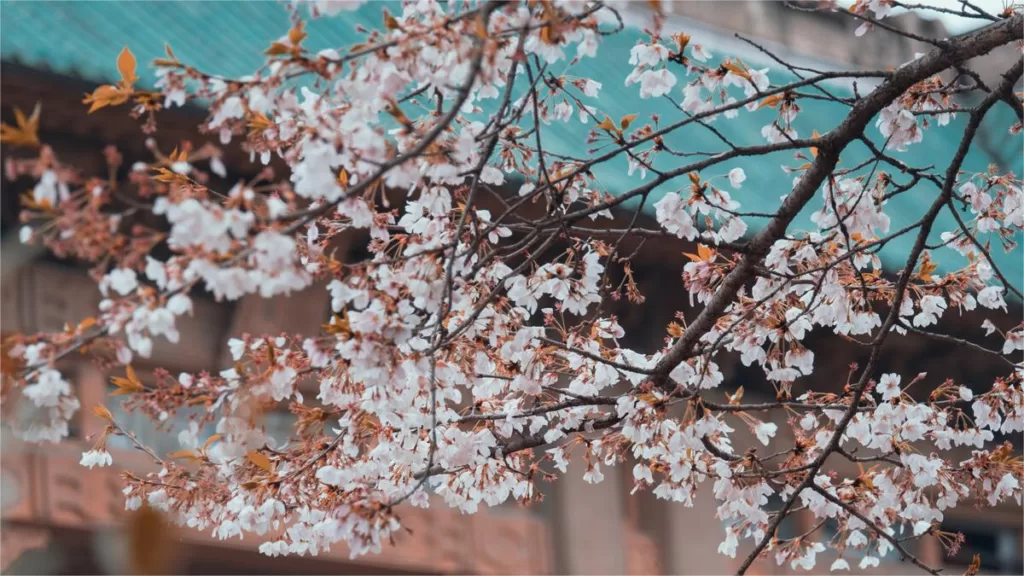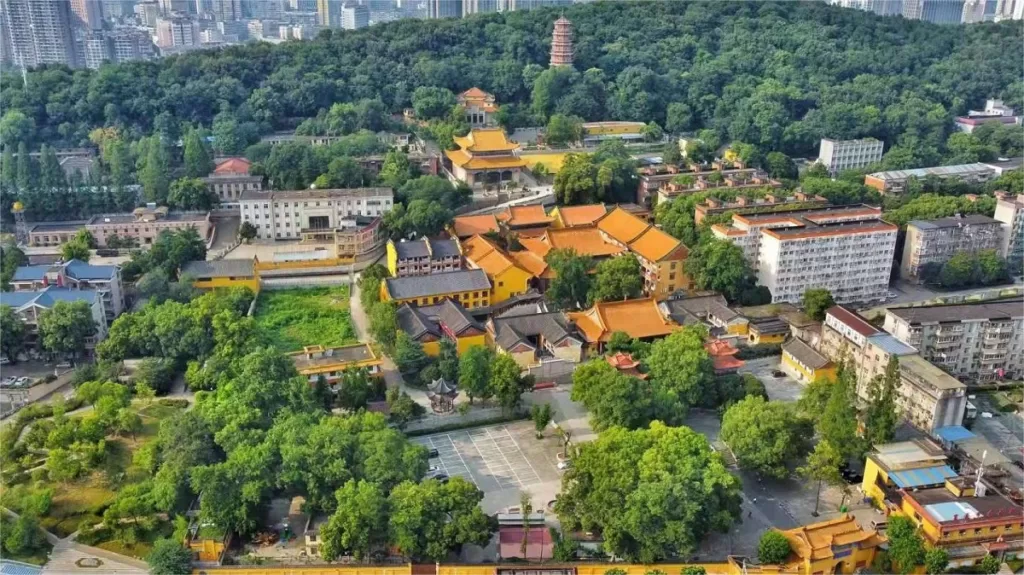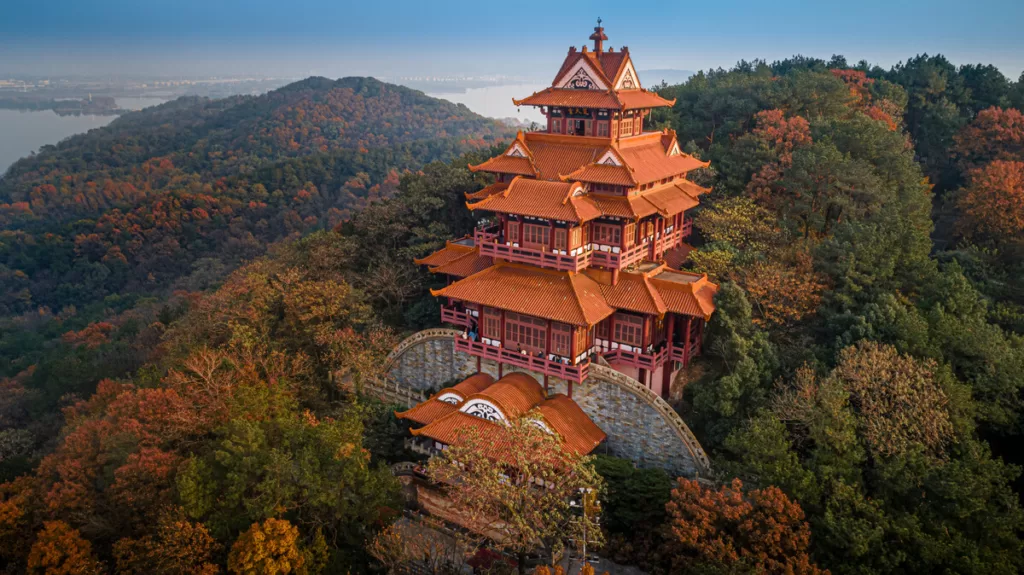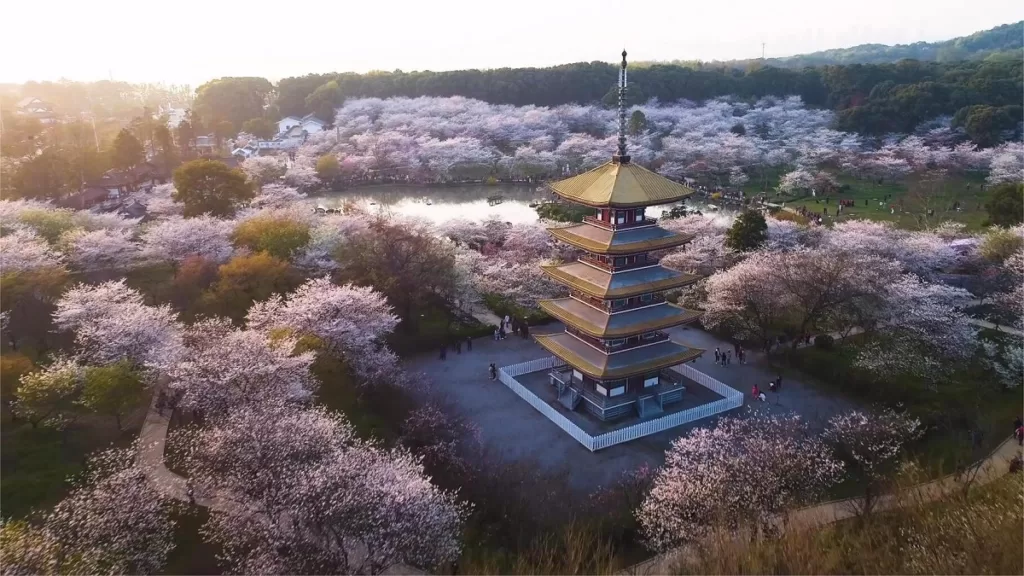Lingbo Gate (凌波门), located in Donghu South Road, Wuhan, is a picturesque and historically significant landmark that holds a special place in the hearts of both locals and visitors. This charming site, nestled along the eastern shores of East Lake (Donghu), boasts a unique architectural feature that sets it apart: a series of extended walkways and zigzagging footbridges that traverse the lake’s waters. These structures, collectively known as Lingbo Gate, were originally constructed during the Republican era when Wuhan University repurposed an open-air swimming pool for educational use.
Lingbo Gate’s captivating orientation facing East Lake with the majestic backdrop of Lujia Mountain creates an idyllic setting that draws people throughout the year. The gate has witnessed countless stories and memories of Wuhan University students who frequented this spot, leaving behind a trail of their lives in this picturesque location. It’s also a favorite spot for couples to capture their love stories through wedding photography. You’ll often find young couples sitting on the bridge, enjoying the breeze, chatting, or strolling along the zigzagging walkways, taking in the serene waters of the lake.
Basic Information
| Estimated Length of Tour | 0.5 – 1 hour |
| Ticket Price | Free |
| Opening Hours | 7.00 – 22.00 |
Location and Transportation
Lingbo Gate is located on the western shore of East Lake, within the campus of Wuhan University in Wuhan, Hubei Province, China. The address is specifically situated at Donghu Nan Road in the Wuchang District of Wuhan, Hubei Province. To get there, tourists can take bus 402 and get off at Donghu Nanlu Lingbomen Stop (东湖南路凌波门站).
History of Lingbo Gate
The history of Lingbo Gate dates back to the 1930s when it was conceived and planned by Li Siguang. The gate’s location lies approximately 400 meters east of the entrance, along the shores of East Lake, where the National Wuhan University established a semi-mountainous swimming pool for sports education. Dignitaries and historical figures such as Zhou Enlai, Deng Yingchao, Guo Moruo, Chiang Kai-shek, Soong Mei-ling, Zhang Xueliang, and Zhao Sijie have enjoyed leisurely swims in these waters or taken relaxing walks in the vicinity. Zhang Xueliang, in particular, had a strong affinity for swimming. He not only supported China’s first Olympic swimmers but also visited Wuhan several times to swim alongside students and faculty at Wuhan University’s Lingbo Gate swimming pool. Under his influence, Wuhan University became a pioneer in promoting swimming, especially for women, by offering the country’s first swimming courses.
In 2012, due to safety concerns related to open-water swimming, a section of the Lingbo Gate’s East Lake walkway was partially dismantled. In 2015, efforts were made to restore Lingbo Gate and pay homage to its rich history. Wuhan University installed a stone monument along the lake’s shore, proudly bearing the inscription “Lingbo Gate Swimming Pool.” The reverse side of the monument provides a detailed account of Lingbo Gate’s “past and present.” Today, it stands as a cherished attraction for local students and visitors alike, who eagerly explore its walkways and relish in the historical significance that envelopes this enchanting place. Lingbo Gate is not just a physical structure; it’s a living testament to the mingling of history, culture, and natural beauty in the heart of Wuhan.



